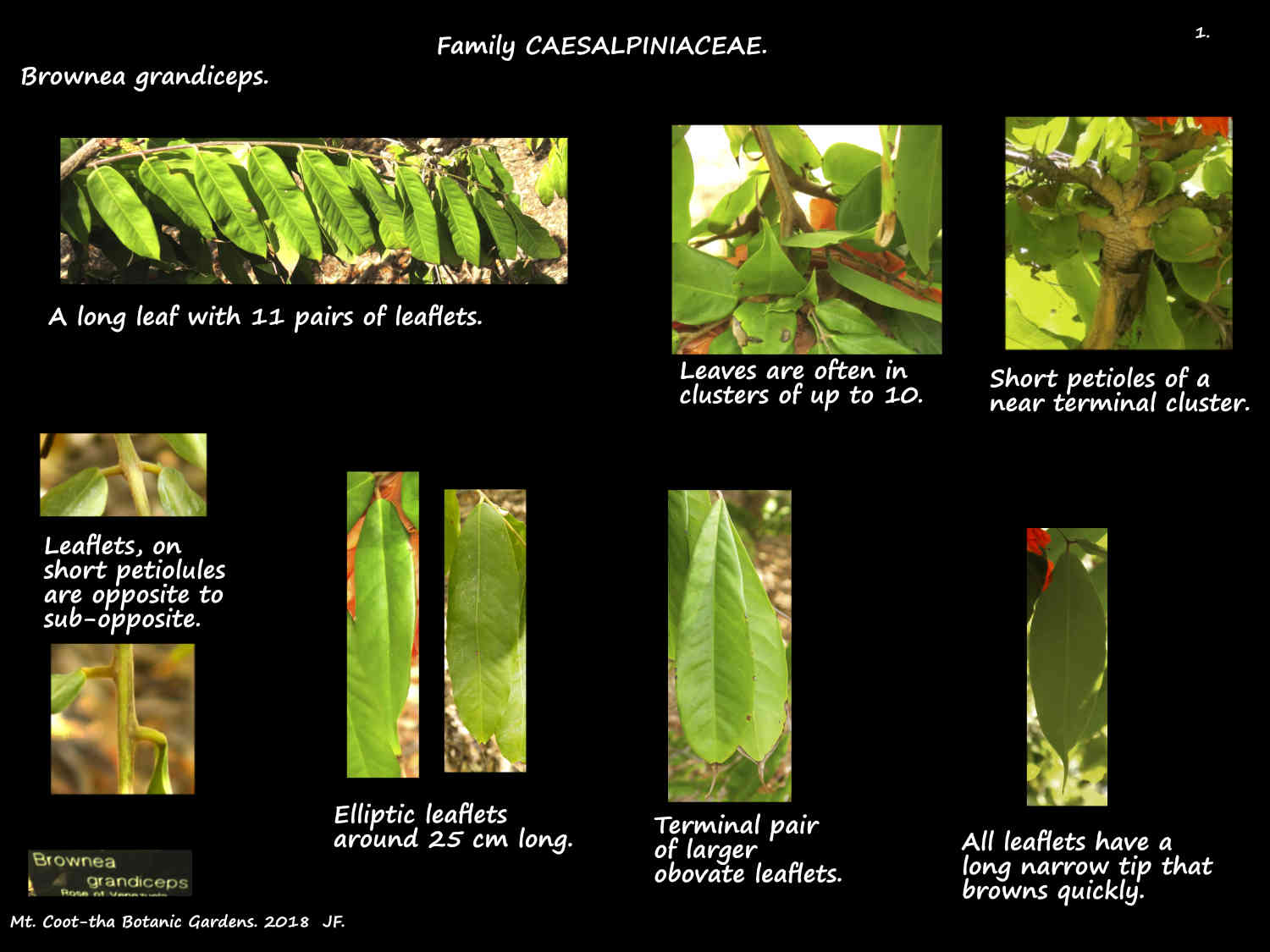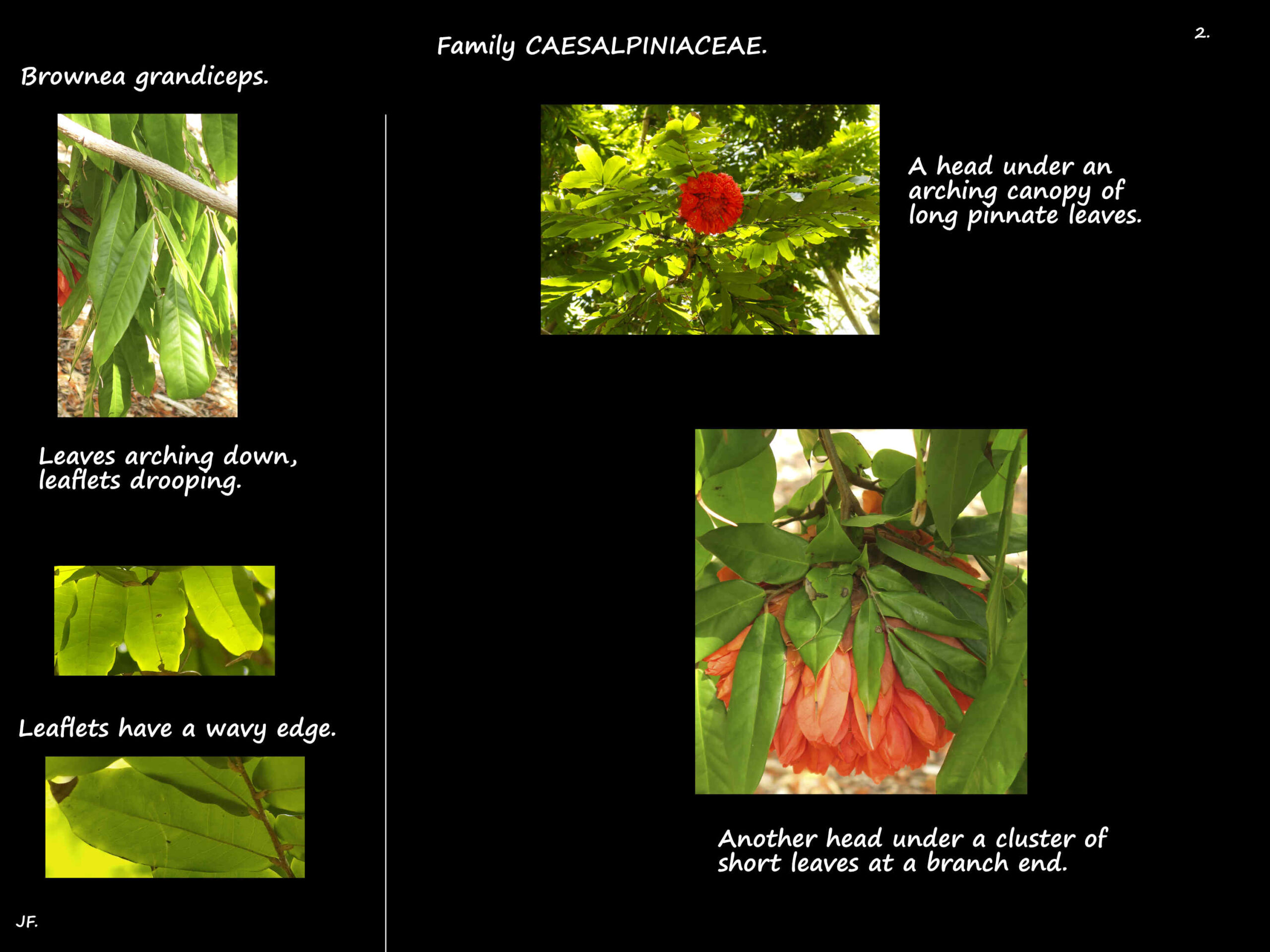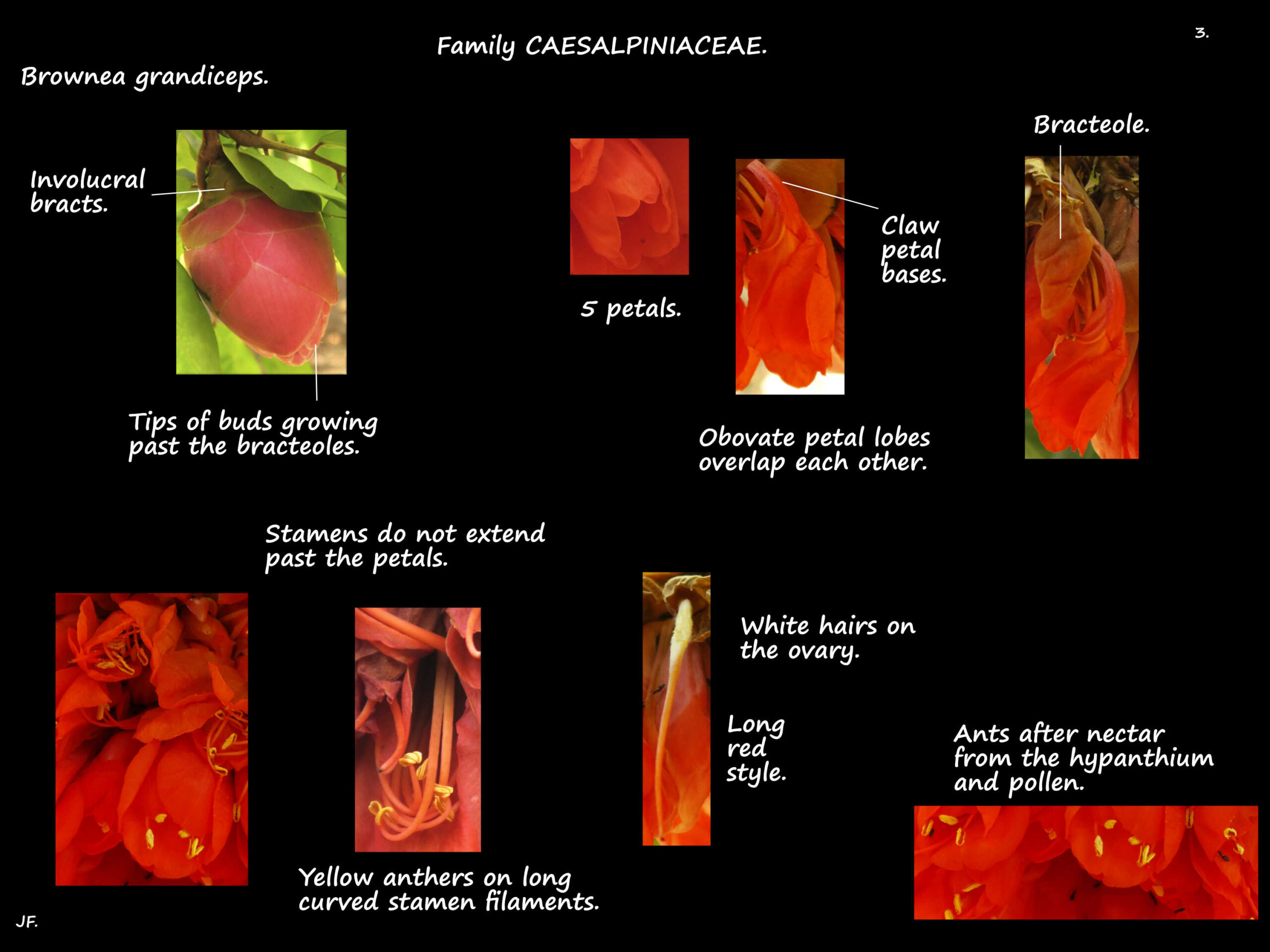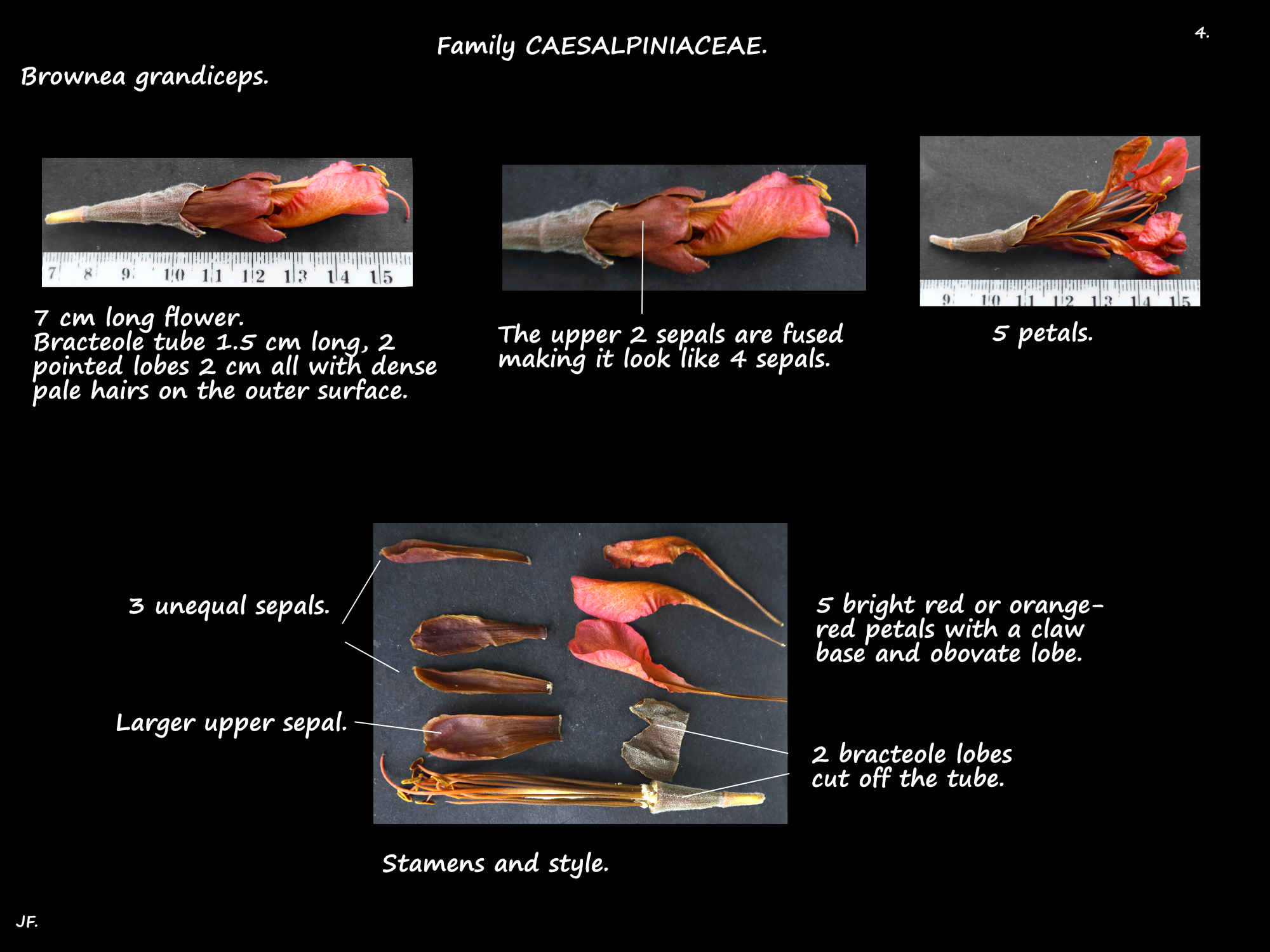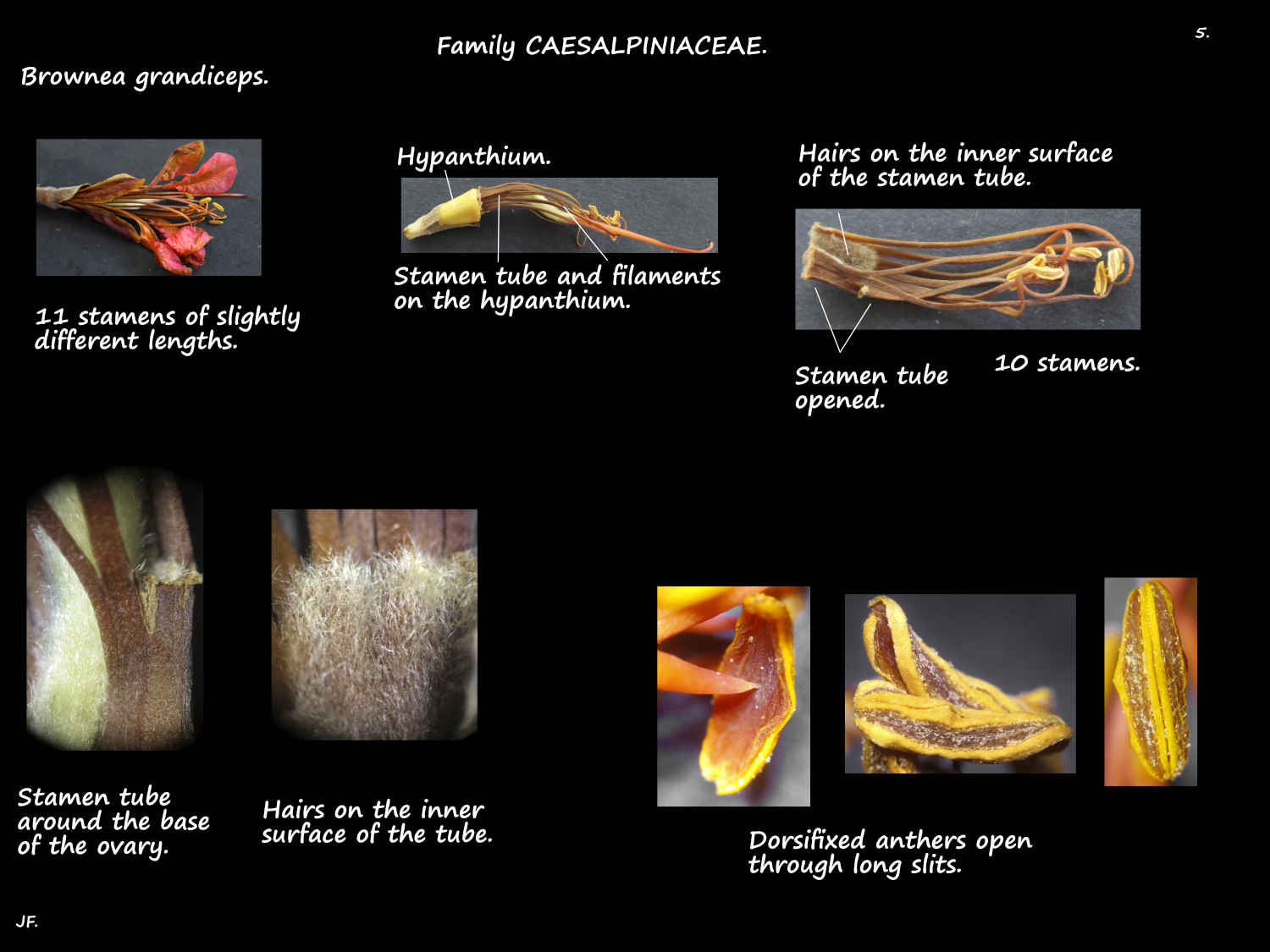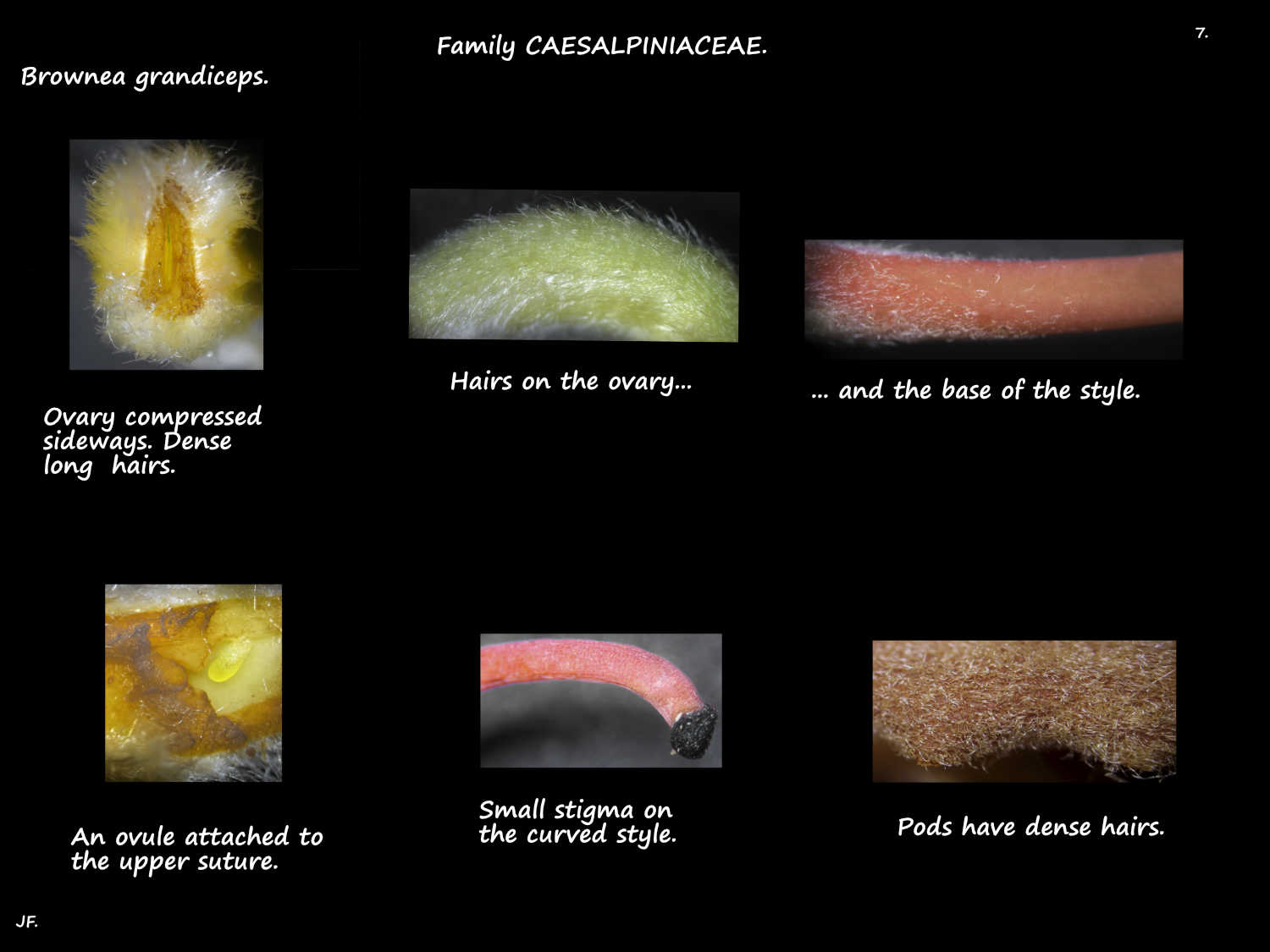The Rose of Venezuela is an evergreen shrub or a small to medium sized tree.
Young stems have 4 longitudinal grooves and dense brown hairs.
Paripinnate leaves, 40 to around 50 cm long are alternately arranged.
The short petiole and midrib have dense hairs.
There are long stipules at the base of the petiole.
Along the midrib are around 10 (4 to 15) pairs of opposite to sub-opposite leaflets.
Leaflets are on a 4 mm long petiolule that may be smooth or have hairs.
The basal leaflets are elliptic to oblong, 5 to 10 cm long and up to 5 cm wide.
The terminal pair can be ovate, lanceolate, obovate or oblanceolate.
These are around 10 to 15 cm long and 2-6 cm wide.
(The Ob- prefix means the opposite way around i.e. wider below the middle).
Leaflets, with a wavy edge and a long thin tip may have hairs on the lower surface.
Drooping new leaves are brownish with pale green specks.
The pendulous terminal inflorescences are almost spherical heads.
From 10 to 20 cm across they are almost hidden under the umbrella of leaves.
The 5 to 10 cm long peduncle has dense hairs.
The whorls of thick coloured involucral bracts at the base fall as the heads mature.
The heads are a very short raceme with up to 100 densely packed flowers.
Each flower is on a thick pedicel around 1 cm long that is densely hairy.
At the pedicel base are reddish bracteoles up to 3 cm long that do not fall.
They have a tubular base and the 2 lobes have pointed tips.
Their outer surface has dense hairs.
The up to 8 cm long flowers have a hypanthium up to 2.5 cm long.
The hypanthium is formed by fusion of the sepal, petal and stamen bases.
The outer surface has dense short soft hairs and the inner has long soft hairs.
The 4 red sepals (5 but the upper 2 are fused) have rounded tips and dense hairs on the outer surface.
They are unequal being 2 to 4 cm long and 1 to 1.5 cm wide.
The 5 bright red, overlapping obovate petals have a narrow claw base.
They are up to 7 cm long and 1.5 to 2.5 cm wide.
The 11 stamens, around 5 cm long do not extend past the petals.
The lower 1 to 1.5 cm of the filaments are fused into a stamen tube with dense hairs on the inner surface.
The yellow dorsifixed anthers open through long slits.
The ovary, and the stalk (stipe, gynophore) it is on are both around 1 cm long.
The laterally compressed ovary is densely covered in long white hairs.
The 4 to 5 cm long curved red style has a small spherical stigma.
The hairy brown pods (legumes) are 20 to 40 cm long and around 7 cm wide.
The 1 to 2 (4) pale brown seeds are up to 4 cm long and around 3 cm wide.
The hybrid, Brownea macrophylla x grandiceps is the same as B. grandiceps except that the young branches have few or no hairs and the flowers are an orange red. Said to be rare, prices start at $180.
Referenced on the Flora Malesiana site, Verdcourt and A.C. Smith remarked that … “the identities of the widely cultivated species of this genus are difficult and confused; cultivated hybrids further complicate identification and it is often not possible to accurately name the plants”.
J.F.

